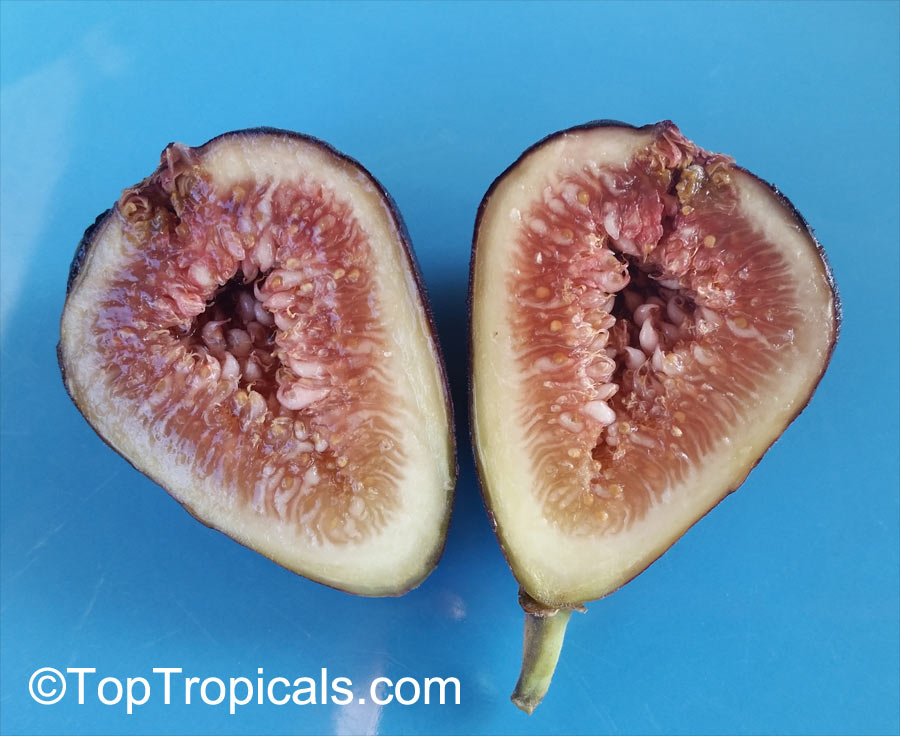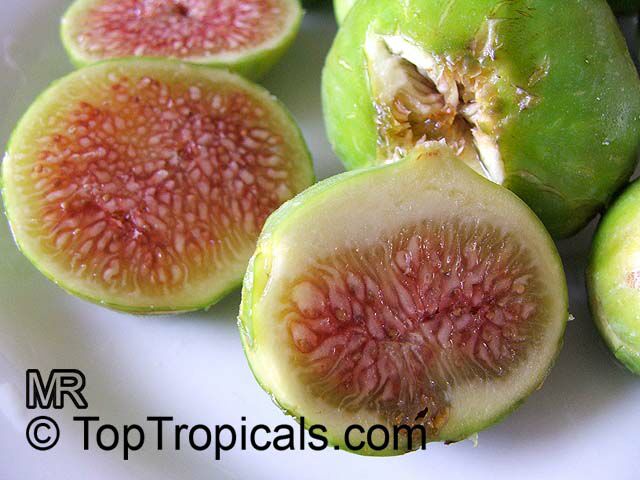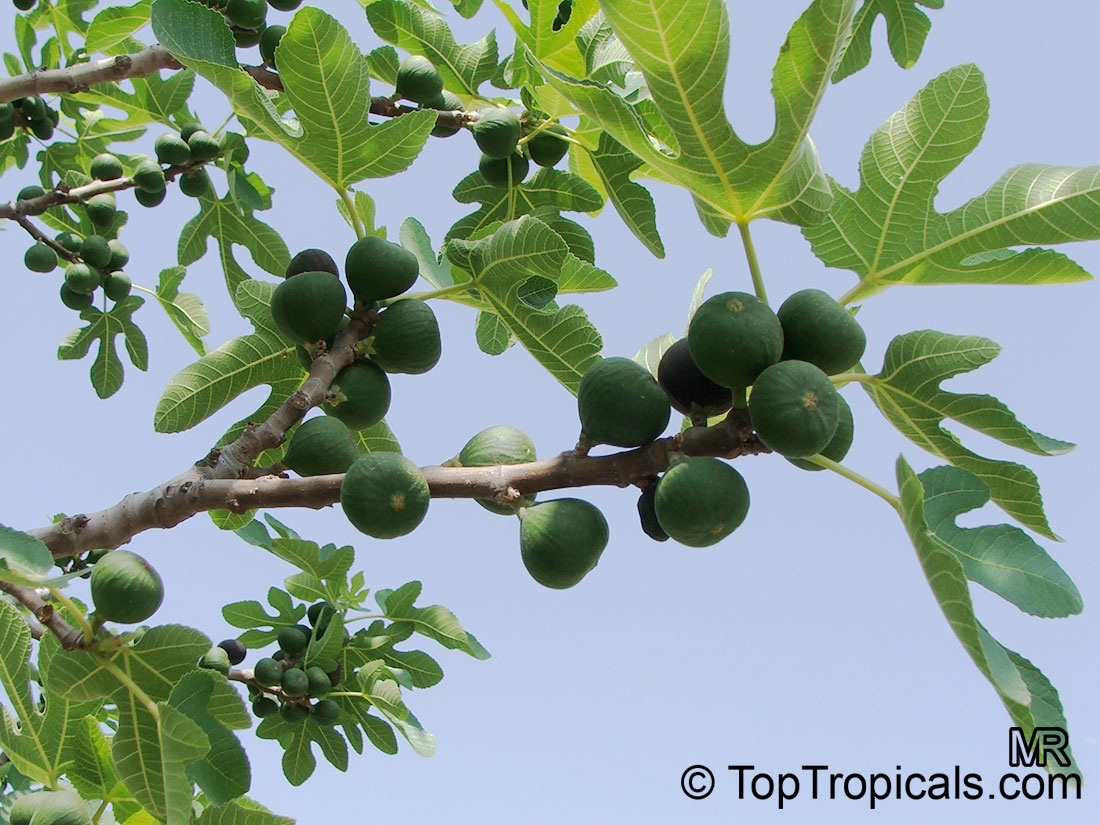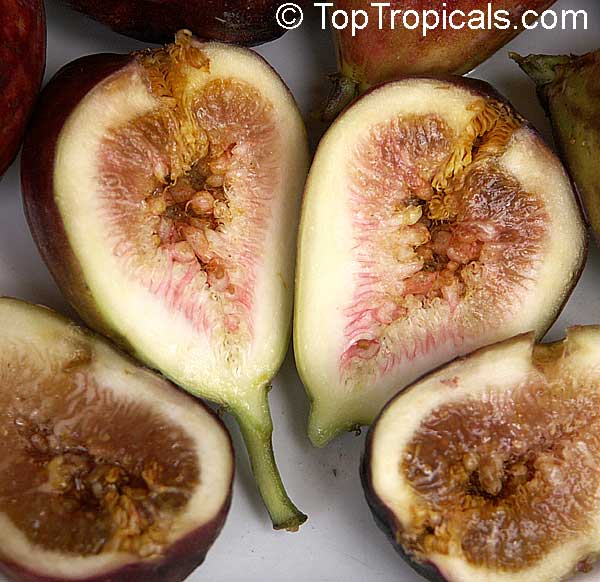Turkish Brown Fig
- by Onika Amell, tropical plant expert
About the Author
Onika Amell was born in farmer's family in Cape Town, South Africa, and always had a keen interest in gardening. She has been a globe-trotter for many years, traveling along with her husband, an engineer, and her life is worth a novel. In Cape Town she worked in groups "Soil for Life and Work for Love", teaching people how to grow their own food, improve their health, and protect the environment. Onika lived in Galilee, Israel, skydiving over 500 jumps and working on the fields planting, harvesting and caring for various crops (Lychee, Avocado, Bananas, etc), helping out in community gardens... In SE Asia, she taught English at business centers... Upon finally settling in SW Florida, she joined the ECHO Global Farms project on teaching farmers/families around the world about effective crop production... Now as a part of Top Tropicals Team, Onika is our plant expert and a columnist. Onika's biggest passions are plants and... of course – cats, who are her children! She has six of them: Itembi, Freddie Mercury, Donald Trump (he is the difficult one), Tigerlilly, Sweetie, and Jaxson.

Turkish Brown Fig - Ficus carica
“To eat figs off the tree in the very early morning, when they have been barely touched by the sun, is one of the exquisite pleasures of the Mediterranean.”
-
Elizabeth David,An Omelette and a Glass of Wine -
Did you know that figs were among the very first plants grown in the hot and arid Middle East? Fast growing and utterly delicious, they soon made their way all over the Mediterranean, transported aboard ships and on the backs of camels. Over time new varieties sprung up in Turkey, Greece, France, Morocco, Portugal and elsewhere. Figs became so popular and were held in such high regard by the Greeks that laws were once created to prevent their export. Thank goodness they finally made their way to America!
When Spanish settlers came to Mexico and California from Spain in the 1500s, they brought figs with them and planted them in North America.

If you are a fig lover, you may be tempted to grow your own. Market-bought figs are never as good and tasty as your own, homegrown figs. They just simply do not keep well in supermarkets. Fast growing, undemanding and low maintenance, figs will bear fruit in just two years, often bearing two crops in a year. Another plus is that they are not bothered by too many pests and are self-fertile. Apart from the delicious fruit, any fig tree will add beauty and shade to a garden. A fig tree can also be trained to have a single stem or allowed to grow multi stems.
Did you know that figs are technically not a fruit? They are inverted flowers! Fig trees don’t flower like most fruit trees. They bloom inside their pods, which later mature into the fruit we eat. A relative of the mulberry (Moraceae), figs are among the sweetest of fruits and also provide excellent nutritional and health benefits for your body.
With so many varieties available, we find many gardeners unsure of which one to choose. Not all figs are created equal. We carry a great selection of fig trees at Top Tropicals. Our selection includes the Beers Black fig, the Black Mission fig, Ischia, the Texas Everbearing and the Turkish Brown (Fig Brown Turkey), to name just a few. All superior varieties. In this article, we are featuring the Turkish Brown, a large, excellent fig, extremely popular amongst fig lovers. It is also known as Aubique Noire, Negro Largo and San Piero.
The fruits of the Turkish Brown are pear-shaped, with maple-brown skin. The flesh is heavy and juicy inside. The flavor is often described as decadently sweet with notes of hazelnuts and confectionaries. Best yet, they are prolific fruit producers.
Brown Turkey fig trees can reach a height of around 18 to 25 feet tall, but are very easy to prune to maintain a smaller tree. This variety will produce 2 rounds of fruit per year. The first crop, called the breba crop, will appear in the spring from the last season's growth. The second crop appears in the fall on the new growth. This is called the main crop. Figs want full sun and well-drained, alkaline soil. This is one of the very few tropical fruit trees that enjoys alkaline soils (while most of tropical plants prefer acidic soils). So if your local soil is alkaline, contains limestone or shelrockl, Fig Tree is a perfect candicate for your fruit garden.

Brown Turkey figs have a USDA zone tolerance of 7 to 11, and will tolerate some wet conditions. Please note though that fig trees are quite sensitive to frost when actively growing, but can withstand as low as 10F in their dormant stage. They do exceptionally well in containers.
The added beauty of growing figs lies in their sheer versatility. Figs are delicious fresh off the tree, but have you ever tried them dried? Their sweet flavor becomes concentrated and the texture slightly chewy, almost candy-like. Figs have endless possibilities for making preserves and jams. Or step it up a notch and surprise your guests with broiled (or grilled!) figs stuffed with goat cheese and a drizzle of balsamic reduction or pomegranate molasses. Try grilled pork tenderloin with fresh fig skewers. Make your own dolmades! The possibilities are endless.
Tempted to grow your own figs? The Turkish Brown is a great place to start! Bonsai lovers? This is an interesting choice for you too. With the correct root pruning, this tree will even give you a few fruit in the bonsai form.
RECOMMENDED FERTILIZERS:
SUNSHINE C-Cibus - Crop Nutrition Booster
Mango-Food - Smart Release Fruit Tree Booster
SUNSHINE-Honey - sugar booster

Read more about fig trees
Tropical Treasure magazine # 13 (3) 2010:
Growing indoors
Ficus carica (Fig Tree): "Each man under his own vine and fig tree"
...It was one of the first plants to ever be cultivated by humans. Fossilized figs dating around 9000 BC were found in an early Neolithic village in the Jordan Valley. The find is the first known instance of agriculture. Figs may have been planted and cultivated intentionally, thousands of years before any other crops were domesticated. The biblical quote "each man under his own vine and fig tree" has been used to denote peace and prosperity...
Growing Fig Trees as house plants
...Fig trees are best known as grove plants, or large dooryard trees. However, they can be grown as houseplants, making a wonderful tropical atmosphere in your home, as well producing quality fruit. Many plant collectors have successfully grown figs in containers, as they adapt fairly well to indoor conditions; they are undemanding plants. However, the lack of fruit production, in spite of all efforts, is their most common frustration. So what are the secrets of fig production indoors?..

